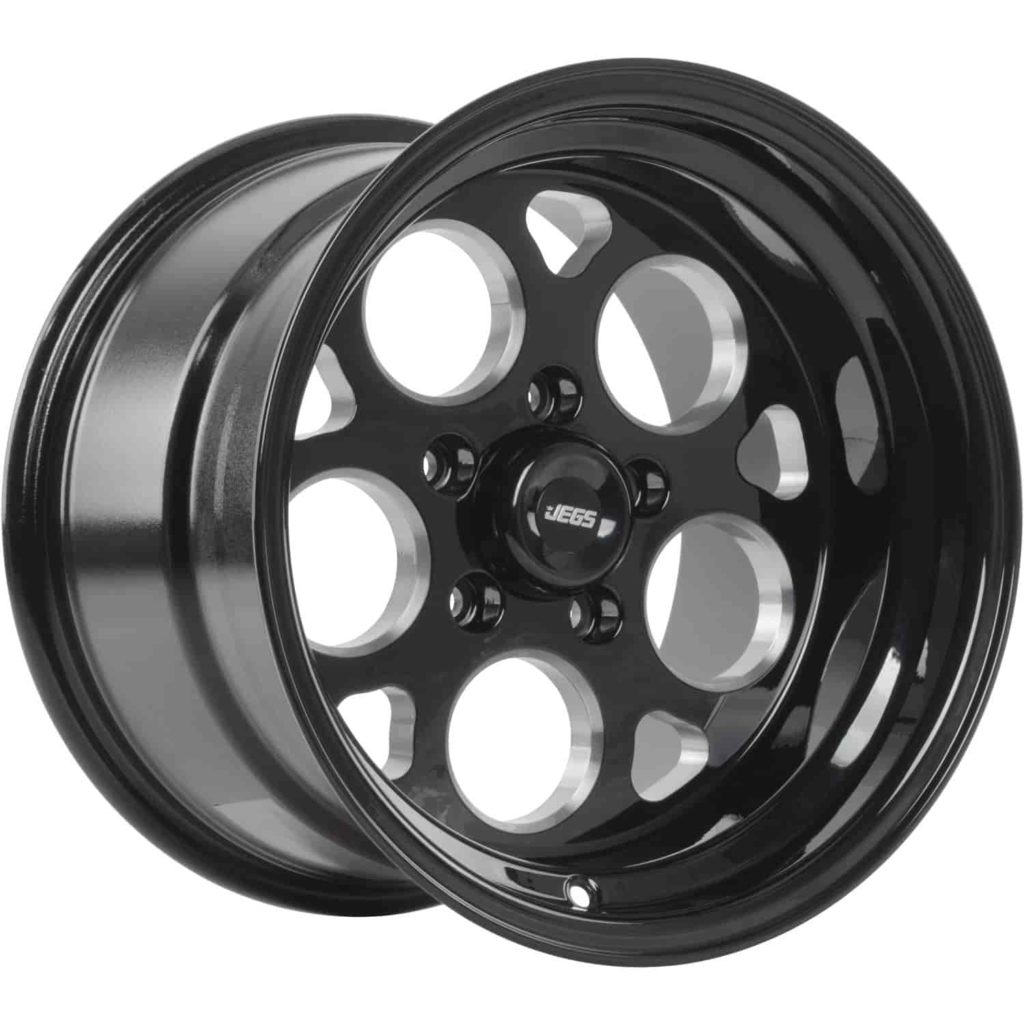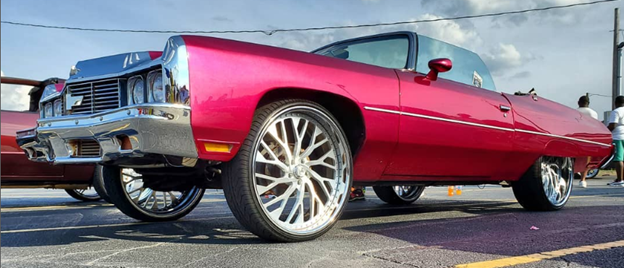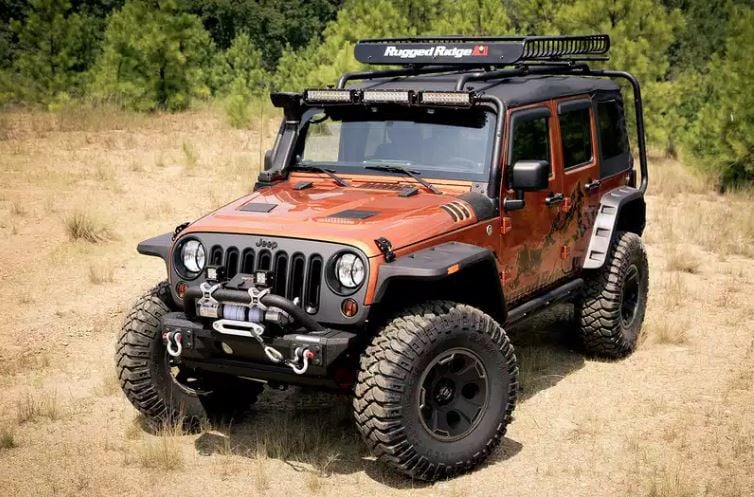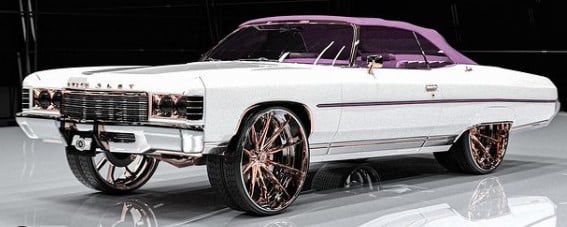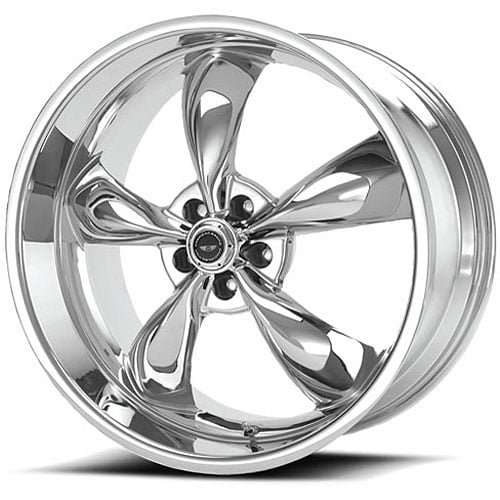
Your car may come with a specific size of wheel (also referred to as a "rim") and tire from the factory, and you may want to change them for various reasons. Perhaps you want to upsize your rims for a better look, increase tire sidewall size for improved comfort, install wider tires for better handling, or combine everything. However, adjusting your wheel size from the factory does have an effect on your car's performance and that's what we are going to be talking about today.
Need anything wheels related? We at JEGS carry a broad range of performance tires and wheels that will fit nearly any vehicle you can find. If it's a striking set of wheels you're after, check out our performance wheels subsection, with a range of products from some of the best brands in the world. When it comes to purchasing performance wheels, you should ensure that you choose products from reputed brands that have undergone strict quality control regimens, as unbranded or cheap fakes can be dangerous. They can break when you least expect it, especially under load, endangering everyone on board the vehicle.
You should also exercise caution with tires. Always purchase branded tires from reputable suppliers such as us, and ensure that they are as fresh as possible by reading the date of production code. Tires typically have a lifespan of five to seven years from this date, depending on usage scenarios, weather, and temperature. Let's now look at the elements of wheel size and how each one affects car performance.
Elements of Tire Size
When talking about elements of tire size that affect car performance, there are three main factors to consider. These are the width, the aspect ratio, and the rim size. All three numbers are prominently printed on the tire, and you may have encountered them before. Let’s take an example.
225/50R17
This tells us that the tire has a width across the top of 225 mm, an aspect ratio of 50% of the width (112.5 mm from the top of the wheel to the top of the tire), and will fit on a 17-inch rim.
Let’s now take each element in isolation.
Width
The width of a tire is the footprint that makes direct contact with the road when the tire is correctly installed on a vehicle and inflated with the appropriate pressure. The width is expressed in millimeters. In our example, this would be 225mm.
A wider tire will have a larger contact patch. This translates into better braking and cornering performance, all other factors equal. This also grants the tire better traction. However, acceleration may be slightly slower due to the increased contact patch and resulting gain in rolling friction unless your previous tires could not handle the engine's power effectively and lost traction as a result. Wider tires also result in a slight decrease in fuel economy. Narrower tires offer less traction and grip at the limit but are a popular choice for economy cars because they provide better fuel economy due to their smaller contact patch.
When increasing the width of your tire, you should consider whether the wider tire will rub against the wheel arches, suspension, and steering components, especially under load and steering lock in the case of the front wheels.
Aspect Ratio
The aspect ratio denotes the height of the sidewall. The 50% aspect ratio in our example indicates that when properly inflated, the sidewall will measure 225mm * 50% = 112.5mm. Altering the aspect ratio will alter the tire's circumference as a result. A higher aspect ratio with the same width will result in a taller tire with more sidewall, enhancing comfort at the expense of handling. A lower aspect ratio will improve handling at the cost of comfort.
Rim Size
Rim size refers to the diameter of the wheel, and this is measured in inches. The 17 in our example refers to a 17-inch rim. There are other considerations for rims, but that's for another article. When you change your rim size, you need to change your tires and use a wheel size calculator to perform a wheel size comparison to ensure that you don't massively affect the circumference of your wheel and tire assembly. The typical trade-off with a larger rim size is a lower-profile tire, and the opposite is true for a smaller rim size.
Relationship between aspect ratio and rim size
Tire aspect ratio and rim size affect the circumference of your tire, as we've mentioned. Changing the circumference of your tire, especially increasing it, can result in reduced acceleration but higher top speed, all other things equal. The increase in tire circumference can also cause it to contact the wheel arches, suspension components, and steering components in the case of front wheels, particularly when the steering is at full lock. Therefore you should check for this before upsizing your wheels. Manufacturers and online sources typically state what the minimum and maximum wheel and tire size is permissible on each model, so if you’re planning to exceed it, some modifications to the suspension and steering system may be required.
Tire Size Calculator
(Enter the size on the tire as separate measurements. For example, P235/60R15 is entered as 235 for width, 60 for aspect ratio, and 15 for wheel diameter)
Width (in millimeters):
Aspect Ratio (percentage):
Wheel Diameter (in inches):
Don’t Forget to Adjust Your Speedometer
When you increase the circumference of a tire, it affects your speedometer reading, and you may even get a ticket unless you re-calibrate your speedometer. The reason is, that your car will travel further for each revolution of the wheels, but your speedometer is still calibrated for the stock rim and tire size. At higher speeds, a larger tire may result in a 5 mph or more discrepancy, where you are doing an indicated 70 mph, but are actually traveling at 75 mph.

Speedometer Gear Teeth Calculator
(input the type of gear and number of teeth to see the correct corresponding gear tooth count)
Rear Axle Ratio:
Tire Diameter (in inches):
Select Gear Type:
Number Of Gear Teeth:
JEGS for wheels, tires, and everything performance
Jeg Coughlin noticed the absence of stores for performance parts and founded JEGS in 1960. Today, JEGS has grown beyond the Columbus, Ohio store, which still remains to serve physical shoppers, into a country-wide e-commerce portal where you can browse, compare, and shop from the comfort of your computer or mobile phone. Competitive pricing, comprehensive after-sales service, friendly expert advice, and applicable warranties are all reasons why many have joined the JEGS family, and why you should as well.
